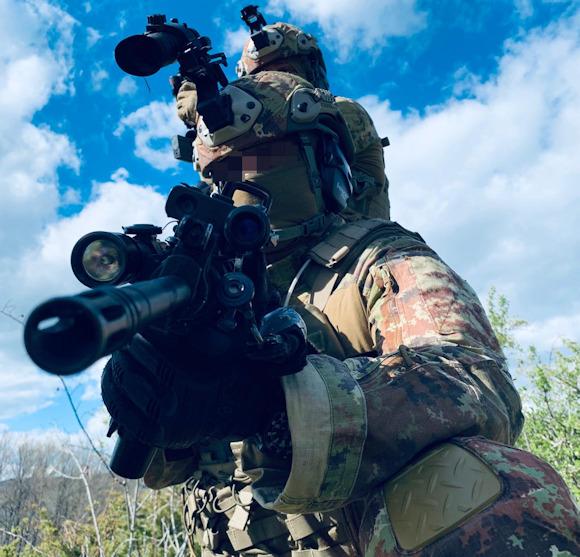The 1st parachute carabinieri regiment Tuscania, until 2002, was an integral part of the parachute brigade thunderbolt, with which he has participated in all international missions, from Lebanon to East Timor, which have seen the use of Great Unity.
Since 2002 - following the elevation of the Carabinieri to the rank of Armed Forces - the Tuscania he is framed in the 2nd mobile brigade of the carabinieri, together with the 7th regiments of Laives, 13th of Gorizia and the GIS (Special Intervention Group).
The personnel was drawn from the mobile brigade to form the MSU (Multinational Specialized Unit), employed in Bosnia since 1996, in Kosovo since 1999 and in Iraq during the operation Ancient Babylon from the 2003 2006.
In the last twenty years the national military apparatus has seen the birth and development of numerous special departments, alongside those with greater operational tradition such as the Nono With the Moschin of the Army and the GOI of the Navy.
In 2004 the CO.FS (Joint Command for Special Forces Operations) was created, which includes the GOI, the Col Moschin, the 17th raiding wing of the Air Force and the GIS of the carabinieri (in the same year the unit anti-terrorism is validated as a special force). The 2017th ranger regiment has also been part of it since 4 Monte Cervino and the RRAO.
The Army therefore contributes to this command with three departments, out of a total force of about 97.000, while the carabinieri, with a force of about 111.000, contribute with a single department.

In this scenario of wide consideration currently enjoyed (especially at a political level) by the Italian special forces, it would seem that the Tuscania has been put on the back burner, while other departments that are only now approaching unconventional operations enjoy quite another consideration.
If we analyzed the capabilities that a department should possess in order to be characterized as special, also according to what General Marco Bertolini said in the live broadcast on Difesa ON AIR on Wednesday 27 January (v.link), or to be able to conduct direct actions, in-depth reconnaissance and military assistance (military assistance), the regiment Tuscania he has them all and has been practicing them for years. These abilities can be found in the many activities carried out both on the national territory and in the missions abroad.
For several years the paratroop carabinieri of Tuscania they are intensely used against organized crime, especially in less permissive contexts. In fact, before the departments of hunters, Tuscania it was called to operate in particular extra-urban contexts, with a high criminal intensity and in areas of difficult access, chosen as a refuge for fugitives (such as the Aspromonte in Calabria rather than the Barbagia in Sardinia).
Support activities for the departments of Territorial of the carabinieri, by the operators of the regiment, is particularly important when it is necessary to "saturate" rather large areas, having to capture fugitives who know the territory perfectly and perhaps enjoy local support. Although over the last few years the Tuscania has been heavily used in operations outside the area, the fight against organized crime (and not only) on the national territory has never ceased.
As regards operations abroad, as previously mentioned, the Tuscania he has been used in all the missions that have seen the Italian Armed Forces as protagonists in the last 40 years.
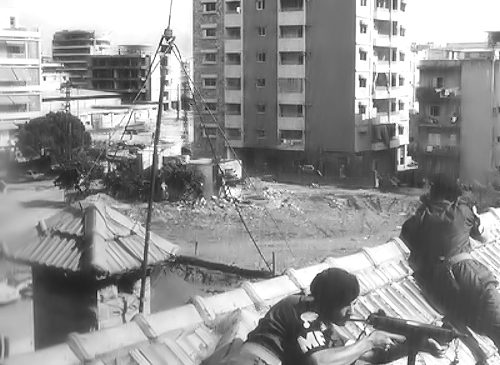
During the mission in Lebanon (1982-84) the Tuscania it was the only unit of the Italian Army, together with Col Moschin, to have a large number of professionals in its ranks, so it was assigned the most delicate tasks.
The first operators of the battalion (it will become regiment in June 1996) arrived in Beirut on September 24, 1982, under the orders of General Franco Angioni, commander of ITALCON. Obviously it was a completely new operating theater compared to the national territory. However the men of the Tuscania were able to make up for the lack of equipment (these were the first missions abroad and the shortages in terms of equipment were significant and common to all departments) and guaranteed, for the entire duration of the mission, the protection of the Italian diplomatic headquarters, providing the at the same time the escort service and the protection - together with the other departments of the contingent - of civilians inside the Palestinian refugee camps.
Following the mission in Lebanon, in the late 80s, the Tuscania he is involved in the defense of the Italian embassy and personnel in Somalia. Small detachments of the department took care of escorting the officials out of the diplomatic headquarters, guaranteeing their safety in a very risky context.
In several cases, the detachments of the Tuscania they had to provide for the evacuation of our compatriots and those of other countries, relying only on their abilities.
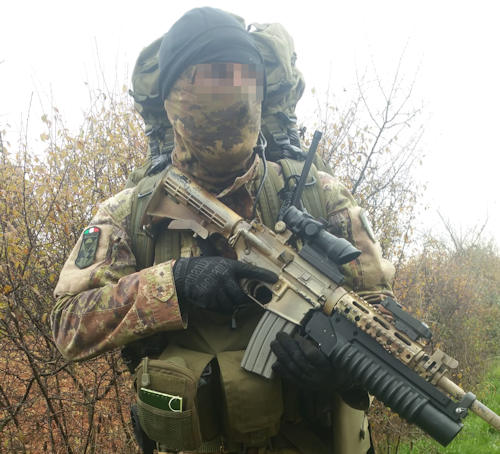
Few people know that on Christmas day 1989 a C-130H of the 46th Pisa aerobrigata landed in Bucharest, carrying a nucleus of the Tuscania in charge of the evacuation of embassy personnel, who had come to find himself in a situation of danger due to the revolt of the Romanian people against the communist dictator Ceausescu.
At the beginning of the 90s a new mission starts at the diplomatic headquarters of Zaire, an operation that will last until the end of 1994. While in 1992 the commitment of the operators of the Tuscania to defend the Lima embassy in Peru, threatened by Maoist-inspired revolutionaries Sendero Luminoso.
In the same year the situation in Somalia begins to deteriorate. The capital Mogadishu is infested with armed gangs (even with heavy weapons), the complex of buildings where the Italian embassy is located becomes the meeting point for many compatriots and foreigners. Therefore it became necessary to set up an evacuation operation in very difficult conditions. Men of the Tuscania they managed to carry out the evacuation operations in the best possible way, receiving various awards for their courage and skills.
Operation I started in December 1992up to, on a parachute brigade basis thunderbolt, in Somalia (UN mission Restore Hope). The Tuscania he returns to Mogadishu with a more massive contingent, his duties range from protecting the Italian embassy, which they reopen, to patrol activities up to fighting the militia bands that run around the city. Being also carabinieri the parà del Tuscania they managed to carry out many intelligence operations in Somalia, often managing to make use of the collaboration of the locals. When the Italian contingent was withdrawn in 1995, the operators of the Tuscania they were the last to leave Somalia.
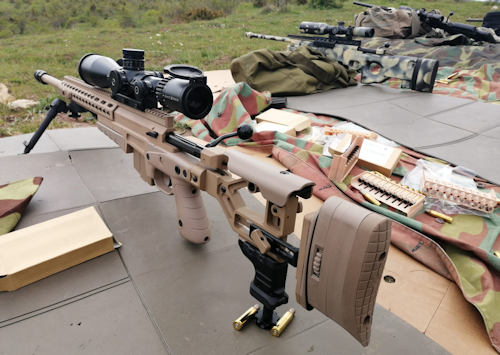
Also in 1995 the parà del Tuscania they are sent to Bosnia in the wake of the IFOR international contingent, in order to enforce the truce that was laboriously achieved after three years of war in the former Yugoslavia between Serbs, Croats and Bosnians.
In addition to the canonical tasks of military police, the paratrooper carabinieri also carry out the task of protecting the commander of the contingent, centered on the bersaglieri brigade Garibaldi, General Pedestrian. A task not without complications given that the city of Sarajevo was full of weapons and possible snipers.
Recall that the Tuscania, Together with Nono and at the GOI, it was one of the few departments of the Italian Armed Forces to have in-depth training in precision shooting, so it is possible that in some cases, the paratrooper carabinieri, armed with a rifle bolt action H&K MSG-90 caliber 7,62x51, found themselves in the need to carry out anti-sniping shots.
It is important to highlight that General Pedone's legal adviser was Colonel Leso, commander of the Tuscania. Given the particular tactical context, Leso proposed the creation of a gendarmerie unit that could carry out police duties and, should the situation worsen, also support fighting against hostile forces. This unit is known as MSU (Multinational Specialized Unit), many operators of the Tuscania (as well as military from other countries), precisely by virtue of their preparation and their operational experience in various scenarios. The effectiveness of the MSU was very high and, among its tasks, it provided for the training of the local police.
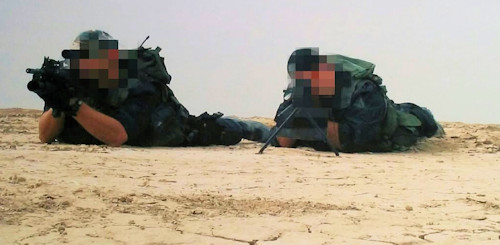
While the mission in Bosnia was underway, in 1997 the economic and political situation of Albania precipitated giving rise to serious riots by the population. In March the parà del Tuscania they played an important role in evacuating foreign civilians from the troubled country. Immediately thereafter, Operation Alba, an Italian-led European mission, began. The Tuscania, as soon as it became a regiment, it participates with a strong representation, carrying out its activities in the area of Valona and the capital Tirana where it faces armed gangs of criminals who often gave up their criminal intent thanks to the determination of the paratroop carabinieri.
The situation in the Balkan region remained heated, in 1999 NATO intervened against Serbia to avoid a genocide in Kosovo, with an Albanian majority. In June of the same year the KFOR forces enter Kosovo, obviously the operators of the Tuscania with the MSU, given the excellent results that this unit had obtained in Bosnia.

In September 1999 the operators of the Tuscania, together with other units of the Army, arrive in East Timor in the Pacific Ocean, as part of the peacekeeping the UN Stabilized. In the former Portuguese colony, armed gangs, mainly of Islamic origin, were killing the local population, mostly Catholic. This is the farthest mission from the homeland ever carried out by the Italian forces.
The primary problem to be addressed (essential requirement of a department in the field of special operations) for the men of the Tuscania was to relate to the local population. Contacts were kept thanks to the interpreters and those of the operators who were able to express themselves in Portuguese, a language still known by the older population.
The paratroop carabinieri studied the tactical conditions, should the situation degenerate, which meant mapping the location of the Italians, as well as identifying specific areas from which to carry out evacuation procedures.
Another fundamental activity was to make contact with the inhabitants of the villages located in the jungle outside the capital Dili.
The paras of Tuscania they were transported by helicopter to some distance from the villages, then approached on foot through the dense vegetation (same technique used by the British SAS in Malaysia).
Once they arrived at the villages they made a dramatic entrance, trying to convey a feeling of power but without being aggressive. The purpose of these types of missions is to win hearts and minds (typical mission of the special forces), thus establishing a relationship of collaboration with the locals, in order to have correct information about the operational context.
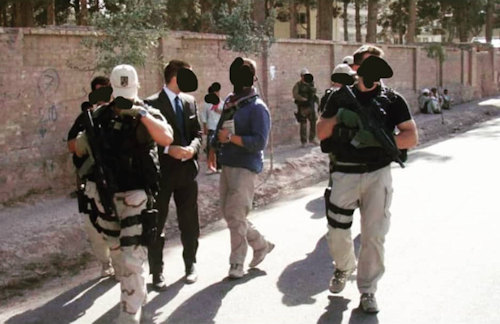
The 11st century opens with the terrorist attacks of September XNUMX and the Americans launch Operation Enduring Freedom in Afghanistan. After the fall of the Taliban regime, the operators of the Tuscania they were the first Italian soldiers to arrive in Kabul, with the task of reopening the Italian embassy and guaranteeing the safety of officials.
In 2003 the Berlusconi government sent the contingent to Khost in Afghanistan Kite, which also included a platoon of Tuscania. The paratrooper carabinieri conducted several reconnaissance along the border with Pakistan, from where the supplies for the Taliban passed. In an operational theater like the Afghan one, where the streets are real mule tracks, and an IED could hide behind every stone, going on patrol becomes an exhausting activity.
At the same time, following the collapse of Saddam Hussein's regime after the American invasion of Iraq, the UN approved a mission to stabilize the country. Italy participated with the Ancient Babylon operation, located in Nassirya, from June 2003. I parà del Tuscania not only did they manage public order (the Iraqi police had dissolved) but also took care of the training of the new police forces.
In the Battle of the Bridges, of April 2004, the Tuscania he fought alongside the Bersaglieri, the Marines and the tankers against the militiamen of al-Sadr who wanted to occupy the city of Nassirya. Regiment snipers eliminated several militiamen avoiding collateral damage to the civilian population.
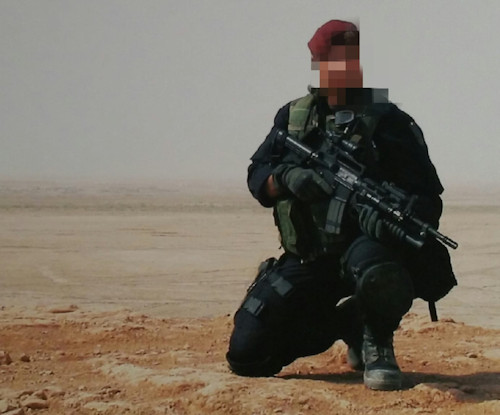
Meanwhile, the commitment in Afghanistan of the Tuscania, it was necessary to establish a police force at the service of the new democratic regime. In fact, one of the Regiment's theater missions is to provide training to local forces (military assistance), with activities of mentoring. This means not only providing training but accompanying the departments on missions, thus participating directly in training and activities in the field.
In 2010, in the Adraskan district, 80 km south of Herat, the men of the Tuscania the training of Afghan police officers begin. In 2012, a Taliban attack with rockets caused the death of a carabiniere of the 13th regiment of Gorizia and the wounding of two others.
Currently, the Tuscania continues his commitment to the mission Fine Parthica in Iraq, aimed at supporting the Kurdish peshmerga against the jihadist militias of the Islamic state.
To highlight the important role played by Tuscania in the Libyan crisis of 2011, when the Italian embassy was the only diplomatic headquarters open in Tripoli, thanks to the staff of the regiment who not only provided for the defense of the headquarters and the diplomatic staff but also took care of counting the Italians present in the Libyan capital , in the - probable - case that an emergency evacuation should be provided. All these activities were carried out in full autonomy and without any external support.
All of these missions have been completed since Tuscania with a numerically reduced staff (currently the Regiment deploys less than 500 elements), the result of a continuous effort that has imposed many sacrifices on all the personnel of the department.
The 1st parachute carabinieri regiment Tuscania deploys a battalion with three operating companies: the 1st amphibious, the 2nd mountain warfare and the 3rd TCL.
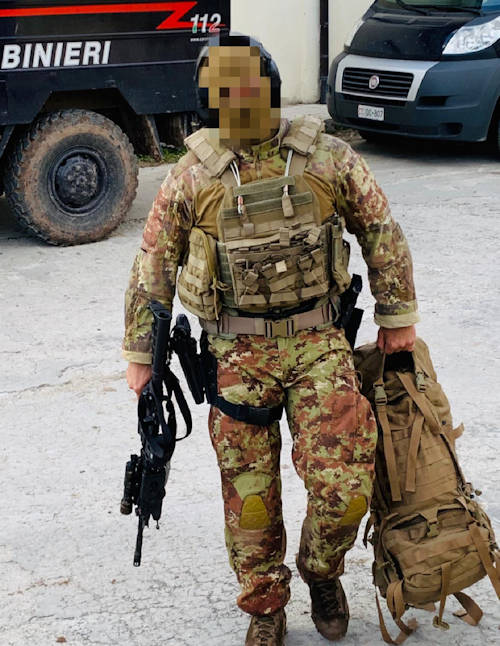
The department's operators are then trained to operate in multiple environmental contexts, so they can field multiple infiltration options that can range from amphibious assault boat raids to TCL parachute parachute launches, including those in mountainous areas.
In addition, particular attention is paid to the area interdiction activities, which have been refined for many years in the various exercises, including the exercise Mongoose, carried out within the brigade thunderbolt, where the departments belonging to the Great Unity they refine, among other activities, the ability to move and carry attacks, in a hostile (non-permissive) operating environment, to the adversary logistic device.
In this roundup of operations carried out by the parà del Tuscania transpires the identity of a department that has been carrying out special (unconventional) activities for 40 years now, demonstrating a flexibility of use that has few (if any) comparisons in the Italian Armed Forces.
However, in a military context that has seen the Italian special forces receive a strong impulse from the General Staff, it seems incomprehensible instead the poor visibility - and consideration - that the General Command of the Carabinieri confers on the parachute regiment Tuscania.
One hypothesis could be that the Tuscania, being a purely military unit, it would clash with a more “pacifist” image flaunted by the leaders of the carabinieri, who see the GIS as a more “expendable” unit. In fact, for the resolution of national problems, the importance of the use of negotiation skills, managed and developed within the GIS, has been increasingly recognized.
In recent years, however, given the asymmetrical nature of jihadist terrorism, which is increasingly unpredictable (see the Paris attacks of 2015 and others), the need for coordination of counter-terrorism operations has been warned. That is to organize a synergy between the anti-terrorism unit par excellence, the GIS and a department with a very high operational capacity such as the 1st parachute regiment Tuscania. Considering also the changing scenarios involving the occupation of large infrastructures in urban areas, where the use of a limited number of operators would not be sufficient.
Photo: author / Ministry of Defense

